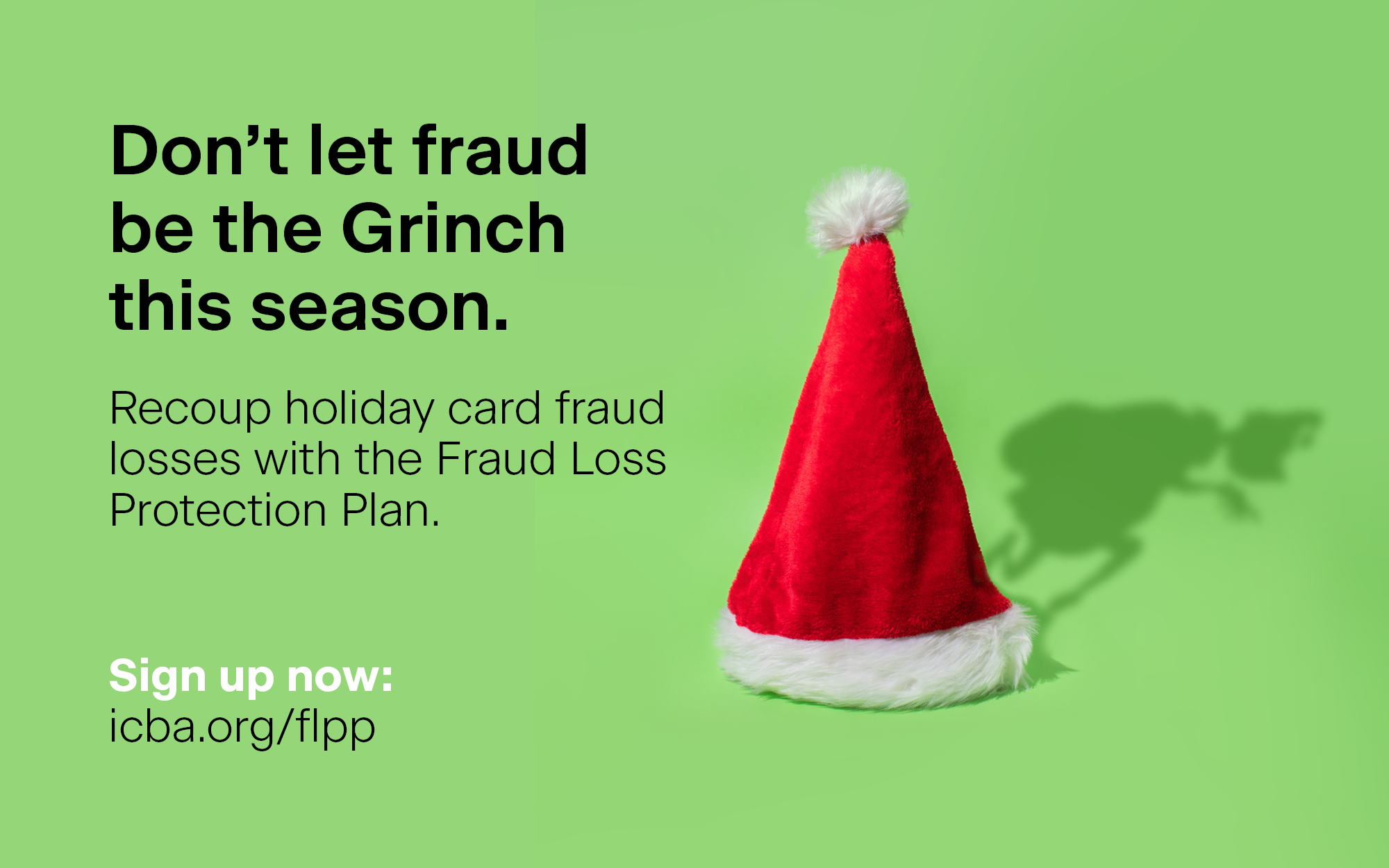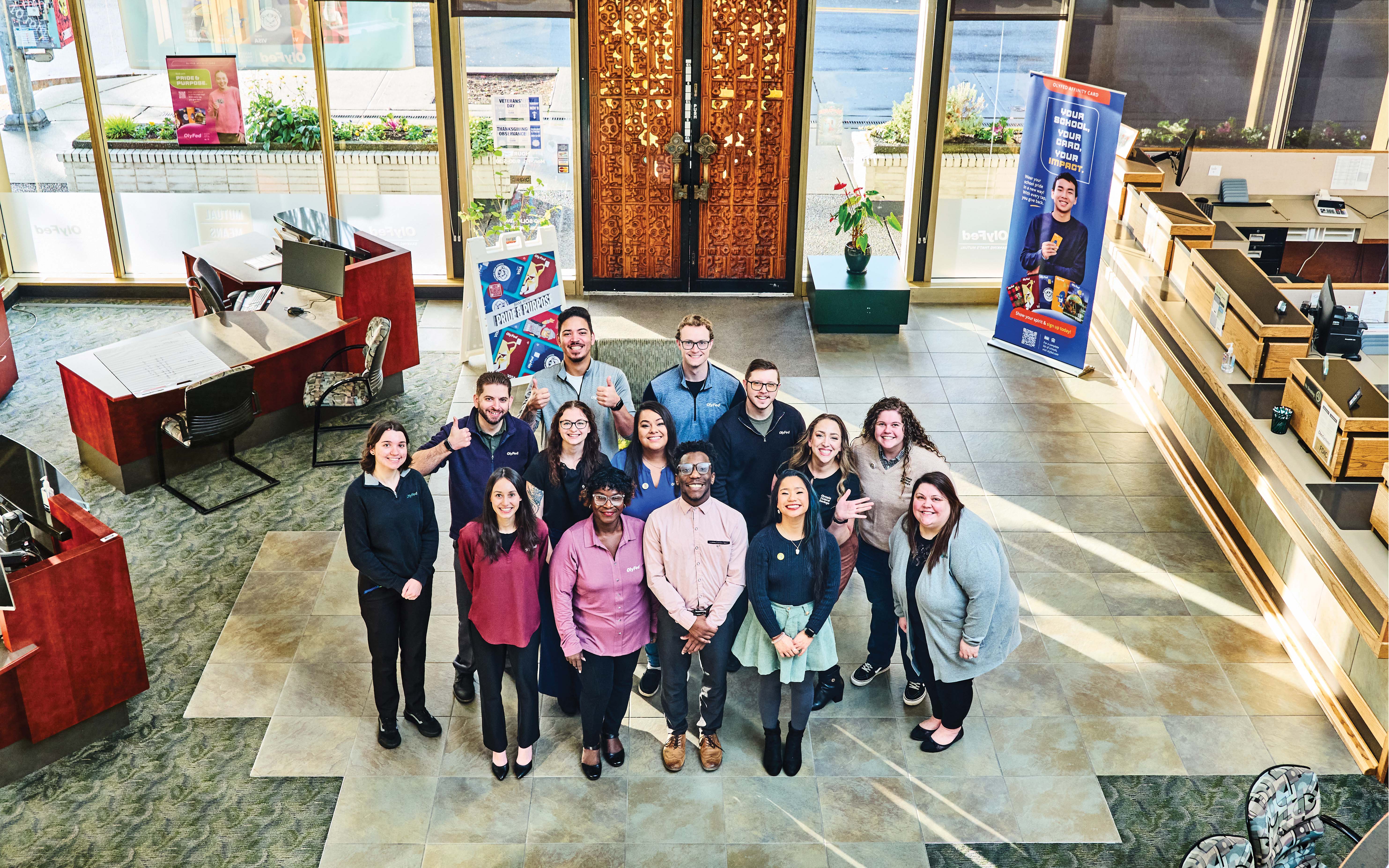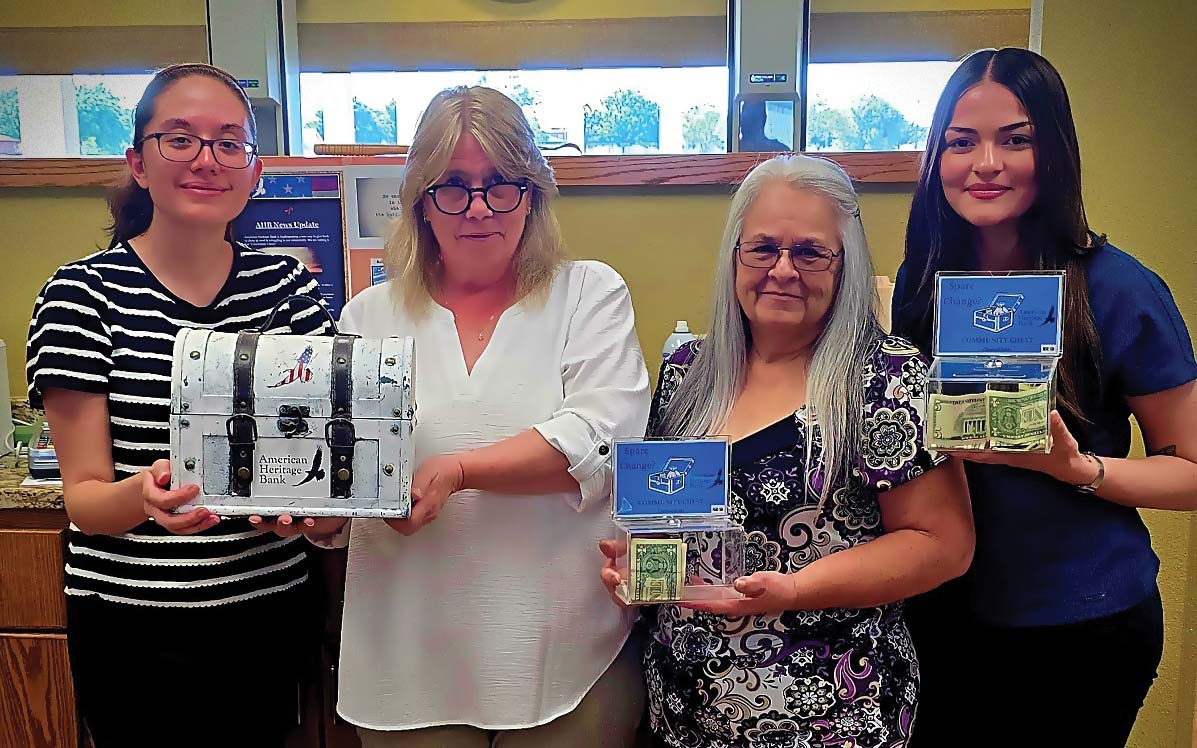Following the damage of Hurricane Ian last fall, Florida’s community banks rallied to help affected employees and customers, providing above-and-beyond service without missing a beat.
Community banks that weathered Hurricane Ian
February 01, 2023 / By Judith Sears
Following the damage of Hurricane Ian last fall, Florida’s community banks rallied to help affected employees and customers, providing above-and-beyond service without missing a beat.
On Sept., 28, 2022, Hurricane Ian, a Category 4 hurricane, made landfall near Cayo Costa, one of the barrier islands on Florida’s western coast. Bringing maximum sustained winds of 150 mph, Ian tied with several other storms to be the fifth-strongest hurricane on record to strike the contiguous U.S.
Weather services saw Ian coming, and community banks all over Florida began preparing. “Our senior management team met several times a day via teleconference, and we also kept in touch via emails,” says Greg Littleton, president and CEO of $1.3 billion-asset Citizens Bank & Trust in Lake Wales, Fla. “Our chief innovation officer, Chad Tagtow, runs point on storm watch with hourly updates.”

Florida has been through this before, and banks had business continuity plans and resources at the ready. “During hurricane season, we run a monthly maintenance program to ensure that we will have power immediately after a storm,” explains David Druey, regional president, south Florida, for $23 billion-asset Centennial Bank in Conway, Ark.
Likewise, Sanibel Captiva Community Bank, the only chartered bank on Sanibel Island, knew well what its barrier island home was facing. “We have a very strong hurricane preparation plan that we’ve honed for 20 years,” says Kyle DeCicco, president and CEO of the $724 million-asset community bank. “We’ve faced a number of named hurricanes, including Irma in 2017 and Charley in 2004.”
Power was a top priority for the banks, many of which have backup generators and/or offsite servers to reduce the chances of total disruption. Covering and unplugging computers was standard, as was testing remote access functionality for employees.
Banks also prioritized communication with staff and customers. Sanibel Captiva uses AlertMedia, a mass communication technology that allows it to send messages simultaneously via text, email or phone. “People are our number one priority,” DeCicco says. “We wanted to make sure we could reach out to all 109 employees and make sure they were safe during and after the storm.”
Cogent Bank, a $1.4 billion-asset bank in Orlando, Fla., also nudged its customers to take care of critical business before the hurricane hit. “We reminded them that the internet could be down for a few days and it’s a good idea to submit that payroll batch today,” says Brandon Box, Cogent’s market president for southwest Florida. “People don’t think about banking during a storm, but you’ve still got to pay employees and pay the bills.”
Last but not least, community banks stocked up their ATMs. “If other places are without power and people need cash, we make sure our ATMs have plenty,” says Littleton.
Getting up and running
The impact of Hurricane Ian was devastating, with the greatest damage to the Fort Myers, Sanibel, Captiva and Pine Islands areas. Heavy rainfall and catastrophic storm surges, reaching 12 to 18 feet above ground level, pounded the coastal areas. “I’ve never seen a surge to that extent, and I’ve lived here almost 50 years,” says Elsie Stearns, vice president and senior branch manager for Centennial’s Pine Island branch. “It was the perfect storm. It was huge, and it just sat over us for 10 to 12 hours.”
“There isn’t one person in our community who wasn’t negatively affected by Hurricane Ian,” says DeCicco. “There were many people in our community who had no home, food, clothing or essential items for their families.”

Whatever their circumstances, community banks immediately went to work on recovering. Using back-up generators, mobile branches and improvising as needed, many locations reopened quickly, even if only for limited hours.
Centennial Bank had two branches that lost power, Pine Island and Englewood. The community bank deployed a mobile branch to Englewood, which was operational within a week after the storm. Thanks to a relatively new, hurricane-rated structure, the Pine Island branch came through the storm with minimal damage, despite taking a direct hit. The branch reopened 10 days after the storm, working without power for approximately a week.
With its inland location, Citizens Bank’s Lake Wales office mainly endured water intrusion as well as loss of power for about four days. But Citizens did open all offices two days after the storm.
“Our two big offices have full-sized generators and worked fine, but we had several offices that were operating offline,” Littleton says. For the offices without power, Citizens kept the doors locked and let customers in one at a time.
It was hardly business as usual in the first days and weeks after the storm. The simplest daily chores were a challenge. “After the storm, power was lost, so gas stations couldn’t pump gas,” Cogent’s Brandon Box recalls. “When the rare gas truck came in, it would be a two-hour line waiting to fill up. It was controlled chaos.”
Sanibel Island was one of the hardest-hit areas in southwest Florida, with power out for five full weeks and the causeway to the mainland closed for over three weeks. Sanibel Captiva Community Bank was among the first businesses to resume services on the island, reopening its main branch for limited hours under a temporary soccer tent. “We had folding chairs under the tent and have been out there ever since, two to three days a week, providing cash services and access to deposit boxes and notary services,” says DeCicco.

Often, banking services were conducted via pen, paper and boat. Centennial’s Stearns arranged for boats to transport Centennial team members from the Burnt Store Marina near Cape Coral over to the Pine Island branch. Initially lacking internet, the Pine Island team called other branches on the mainland to verify balances or get account numbers. Upon boating back to the mainland, Centennial staff scanned in information from the Pine Island transactions.
Cogent Bank sometimes used couriers to deliver cashier’s checks or insurance checks directly to their customers. “It made sense to do that rather than us or our clients fighting traffic or using the limited amount of gas,” Box explains. “It was a very tough two weeks there.”
As banks struggled to reopen, they also supported employees who had experienced dismaying losses. “[About 10%] of our employees live on Sanibel,” DeCicco says. “Some lost everything, some lost homes and/or cars, some lost personal items. Other off-island employees lost cars, boats, roofs and/or have damage to their homes.” The community bank responded by finding temporary housing for its eight displaced employees and their families, covering the cost through 2022.
Centennial Bank had previously established a trust account to which employees could voluntarily contribute small amounts at each pay period. In the case of unexpected hardship, employees can apply and access $150 per day with a cap of $2,500.
In addition, Centennial provided hotel rooms for employees who’d lost housing, purchasing a block of rooms in Sarasota and Fort Myers. The bank supplied housing for five of its employees’ families and ended up donating its extra rooms to the Lee County Sheriff’s Department for its staff needs.
ICBA partners with Florida Bankers Assoc. to deliver hurricane relief
The ICBA Foundation’s Disaster Relief Program raised more than $200,000 from community banks and bankers across the U.S. for the Hurricane Ian Relief program. ICBA donated $50,000 and absorbed all administrative costs.
This was the first opportunity for the ICBA Foundation to partner with a state bank association to collect and distribute relief funds. ICBA reached out to the Florida Bankers Association (FBA) to oversee distribution of the funds. “We wanted to partner with those that are acutely aware of what’s happening on the ground and rely on them to make the disbursement decisions,” says Aaron Stetter, EVP, advocacy and strategic engagement for ICBA, who administers the fund.
The FBA funded about $1,900 per applicant for more than 100 people, using about 98% of the funds raised to date. “It was a very emotional experience to see the need that was out there and also the thankfulness for the help from the ICBA Foundation that our bankers felt,” says Alex Sanchez, president and CEO of the FBA. “I want to extend a heartfelt thank you to the bankers around the country who contributed to help Florida. This foundation effort did accomplish what it set out to do. Kudos to the whole ICBA team.”
Rebuilding community
From the start, community banks focused on assisting community and commercial recovery. Banks temporarily eliminated various fees and approved loan payment skips and/or deferrals. By early November, Sanibel Captiva Bank reported processing 162 forbearance requests for loan customers while approving and processing over $14 million in new loans for rebuilding efforts.
Community banks also helped their customers navigate federal disaster loan and assistance programs. Cogent Bank is an SBA lender, and its loan officers went to clients’ offices, whether nonprofits or traditional businesses, and at no cost walked them through the steps of gathering documents and completing and uploading their applications to the SBA portal.
Centennial’s boat trips to Pine Island also provided benefits to others in the community. Stearns also arranged to bring medical staff over to check on elderly patients and others that might be in need.

Sanibel Captiva allowed some displaced nonprofit organizations to use its extra office space and conference rooms while they rebuild. When the bank reopened its main branch, it also began serving hot lunches. By mid-November, the bank had served more than 1,500 hot dogs and hamburgers and had plans to continue for several weeks.
In addition, Sanibel Captiva announced a $100,000 donation to 13 nonprofit organizations contributing to hurricane relief and recovery efforts. DeCicco reports that the bank’s staff has logged more than 120 hours in community service since recovery efforts began.
Cogent Bank sponsored a hurricane rebuild concert in Bonita Springs that helped raise money for the recovery. The bank also covered the cost of activation fees for thousands of Visa gift cards that the United Way gave to residents to cover essentials.
Rebuilding and replacing what was lost will take years, but bankers are impressed with the resilience on display. “I’ve been amazed at how the community and people have rallied,” says Cogent’s Box. “Most have said, we’re not going to let this stop us.”
“There’s a kind of campaign on Pine Island that ‘we’re stronger than the surge,’” Stearns says. “We’ll rebuild. We’re stronger than the surge. We have to be.”
Getting lives back in order
The Fort Myers area endured high winds and rain and a record 7.25-foot level surge, which left behind catastrophic damage. “Thirty-three percent of our clients were impacted,” says Brandon Box, market president, southwest Florida, for Cogent Bank. “People had fish in the pool and saltwater mud up to the ceiling. They lost their house, their car or lost both cars. In that situation, before you think about business, you have to get your life back in order.”
The home of one of Cogent Bank’s team members was flooded with five feet of water. “One of the things I’m most proud of is that our whole team showed up at his house the next day even though everyone had their own property to clean up,” Box says.
“Twenty of us cleaned out his entire house and got him back on his feet,” he says. “It’s like taking someone’s entire house and putting it by the curb. We cut the drywall out, took out all his floors, basically took the house down to the studs. We were able to stop the mold so he can start to rebuild. The coolest thing has been seeing people help one another.”
Business continuity: 7 ways to prepare now
Superb preparation helped Florida’s community banks weather Hurricane Ian as well as they did. Steven Estep, AVP, operational risk, ICBA, outlines the steps all community banks can take to have business continuity plans, tailored to their risk factors, ready to go:
Put someone in charge of creating and maintaining a business continuity plan
Conduct a full risk assessment, including:
Identify and prioritize core functions
Identify the most essential functions
Identify what’s required to support those processes
Develop rules and responsibilities, lines of authority and succession for emergencies
Develop crisis communication plans
Know what outside parties to call, such as law enforcement and emergency responders, and what information they will need—be sure to make introductions before times of crisis
Consult with third-party vendors to understand how operational you can be even if staff can’t get to offices or branches
Conduct regular awareness and training for all employees
Estep advises banks to invest in extra training for the person in charge of business continuity plans. “It should be more than just putting the job on someone’s plate,” he says. “The more familiar people are with best practices, the better they’ll be able to respond if or when something is needed.”
Subscribe now
Sign up for the Independent Banker newsletter to receive twice-monthly emails about new issues and must-read content you might have missed.
Sponsored Content
Featured Webinars
Join ICBA Community
Interested in discussing this and other topics? Network with and learn from your peers with the app designed for community bankers.
Subscribe Today
Sign up for Independent Banker eNews to receive twice-monthly emails that alert you when a new issue drops and highlight must-read content you might have missed.
News Watch Today

Join the Conversation with ICBA Community
ICBA Community is an online platform led by community bankers to foster connections, collaborations, and discussions on industry news, best practices, and regulations, while promoting networking, mentorship, and member feedback to guide future initiatives.













